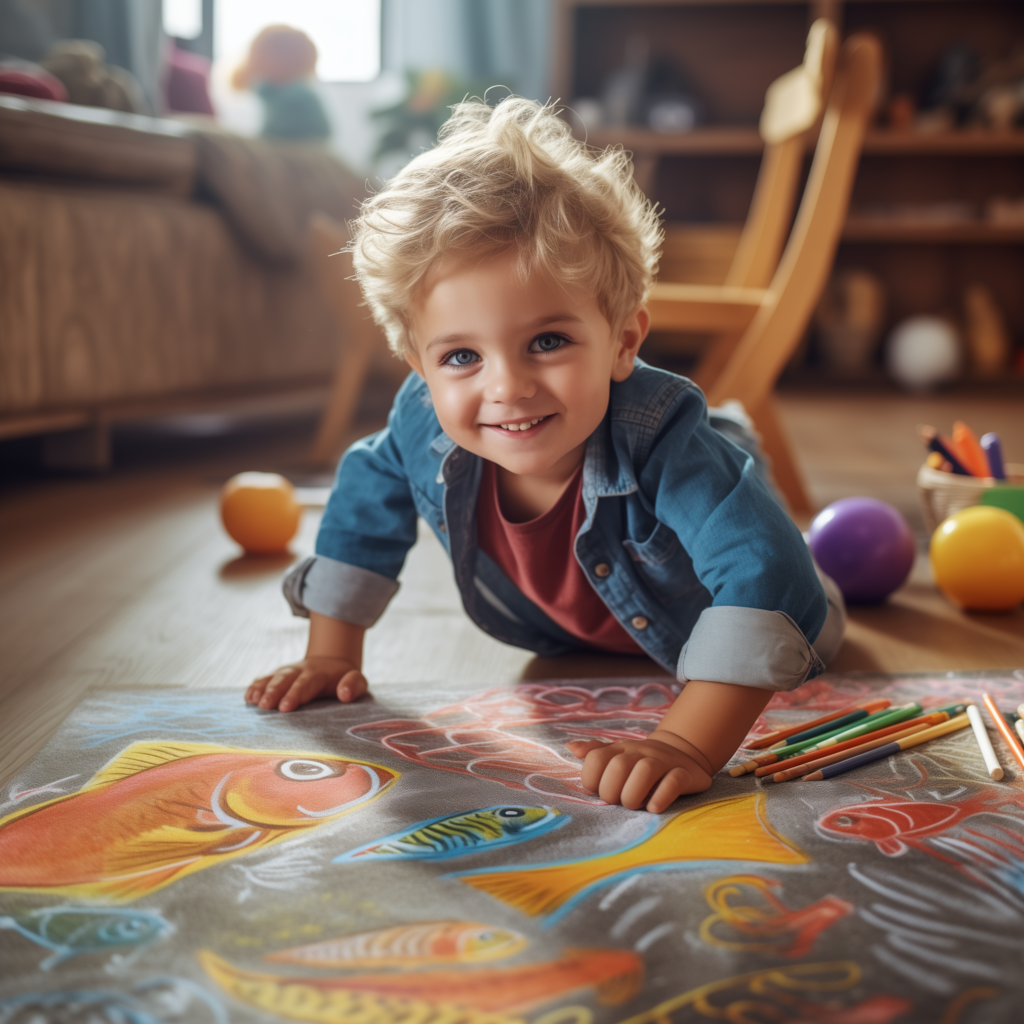They say childhood is a relaxed time when children explore the world. Drawing for kids is one of the most exciting things to do with parents or by themselves. There are many benefits of drawing, as it is not just entertainment but also an important element of a child’s development, aiding in their expression, learning and memory improvement.

Table of Contents
Drawing helps develop creative skills
Drawing is a wonderful outlet for children to express their thoughts, emotions, and creativity through art. It allows them to communicate and share their ideas visually. Through drawing, children learn to convey complex ideas and feelings in a simple yet powerful way, using colors, shapes, and lines to express themselves. Overall, drawing provides children with a fun and engaging way to explore their imagination and express themselves creatively. A child drawing is an important activity that fosters creativity and imagination.
Drawing helps with coordination control and motor skill development
The process of preschooler drawing enhances hand motor skills, movement control, and coordination. Children learn to hold a pencil or brush properly, which strengthens their grip and hand muscles. As they practice drawing lines and shapes, they develop better control over their hand movements. This repeated practice helps them refine their fine motor skills, improving their ability to perform precise tasks. Overall, these activities contribute significantly to their overall motor development, making daily tasks easier and more manageable.

Drawing helps with the perception of shapes and colors
Through the creative process of toddler drawing, where children use crayons, markers, or paint to express themselves, they gradually learn to understand shapes, lines, colors, and spatial relationships. As they experiment with different strokes and hues, they develop a deeper appreciation for the world around them and gain the ability to recreate it on paper or canvas. This hands-on exploration not only enhances their artistic skills but also contributes to the development of their visual memory and fosters attention to detail, laying a foundation for their cognitive growth and creative expression in the future.
Drawing helps to develop imagination and creativity
Child’s drawing fosters an imagination and creativity, providing a boundless space for their fantasies and artistic expression. During the drawing process, children can invent an unlimited number of images, stories, and plots, reflecting their unique perspective and individuality. They freely experiment with shapes, colors, and textures, bringing their imaginations to life through the creative act of drawing. This opportunity to express themselves visually stimulates their thinking and imagination, developing skills in associative thinking and problem-solving. Additionally, drawing enables children to independently tackle creative tasks, fostering a sense of autonomy and confidence in their abilities.

Drawing helps cognitive development
Drawing also contributes to a child’s cognitive development, including attention, concentration, memory, and thinking. During drawing activities, children learn to focus on details and sustain attention for extended periods, enhancing their attention and concentration skills. Furthermore, each artwork requires children to make choices regarding colors, shapes, and compositions, fostering their analytical thinking and ability to analyze information. Through the drawing process, children also improve their memory by reproducing images or scenes they have observed previously. Lastly, drawing for children serves as an effective problem-solving tool, as it encourages children to seek and implement solutions to create the desired outcome.
Drawing helps with emotional connection
Drawing allows children express their emotions through images and colors. They can freely depict their moods and feelings on paper, which contributes to their emotional development and self-expression. During drawing sessions, children have the opportunity to freely express joy, sadness, fear, or any other emotion that resides within them. Each curve of a line, each shade of color can convey a unique emotional tone. This process not only fosters their creativity but also helps them understand their own emotions and how to respond to them. Children drawing pictures can better comprehend their emotions, relax, or express inner concerns. This process of emotional self-expression through art also contributes to their emotional development and self-discovery, shaping their ability to understand and manage their own emotions.
Drawing helps enhance perception of details and analytical skills
During drawing, children learn to pay attention to even the smallest details and analyze complex images. They develop the ability to recognize various visual elements and become adept at closely observing each line and color. This process fosters the formation of their analytical skills, enhances their capacity for detailed analysis, and elevates their level of attentiveness. Through continuous practice and exploration in drawing, children gradually refine their observation skills and learn to appreciate the beauty and intricacy of the world around them. Moreover, as they engage in drawing activities, children often encounter challenges that require problem-solving and critical thinking, further strengthening their cognitive abilities and fostering a sense of curiosity and inquiry.
In conclusion, drawing is an extremely important activity for a child’s development. It contributes not only to creative expression but also to the enhancement of cognitive, motor, and emotional skills. The playful process of drawing not only inspires children’s creativity but also prepares them for further success in learning and life, unleashing their boundless potential for imagination and self-expression. Let your children enjoy this exciting process and develop their creative potential!
